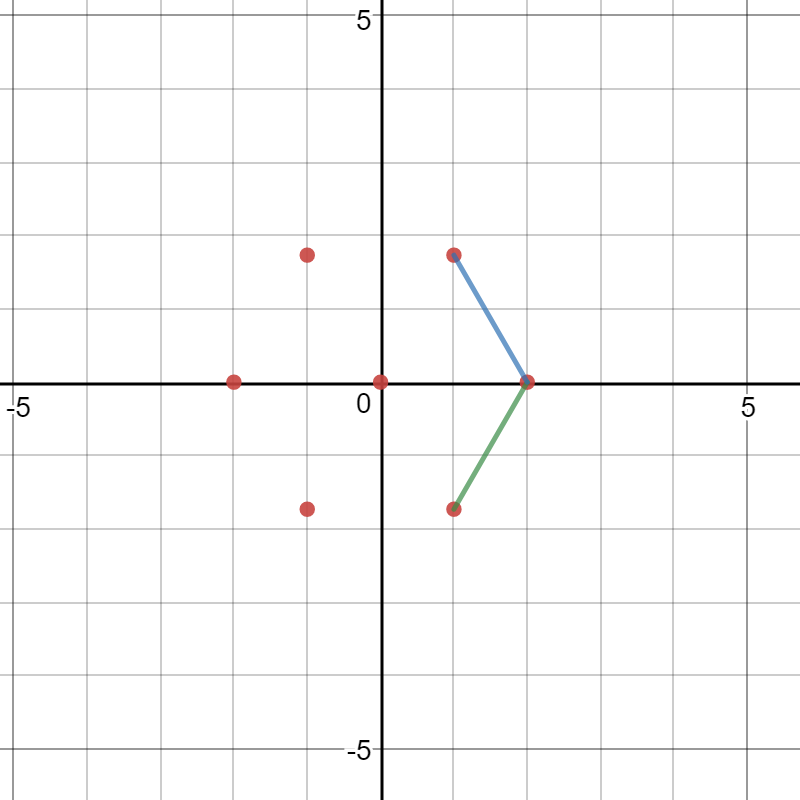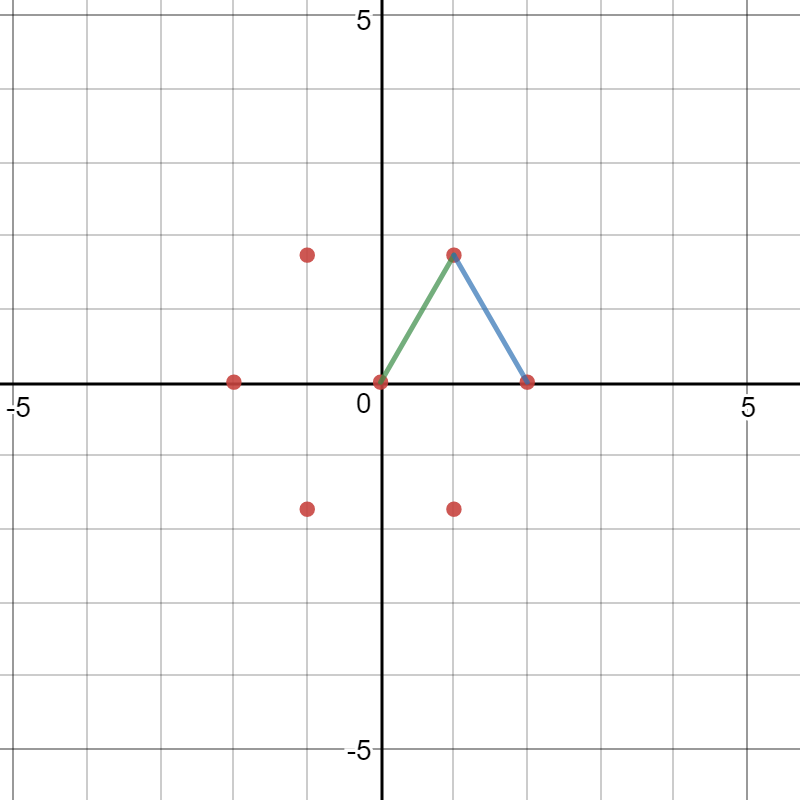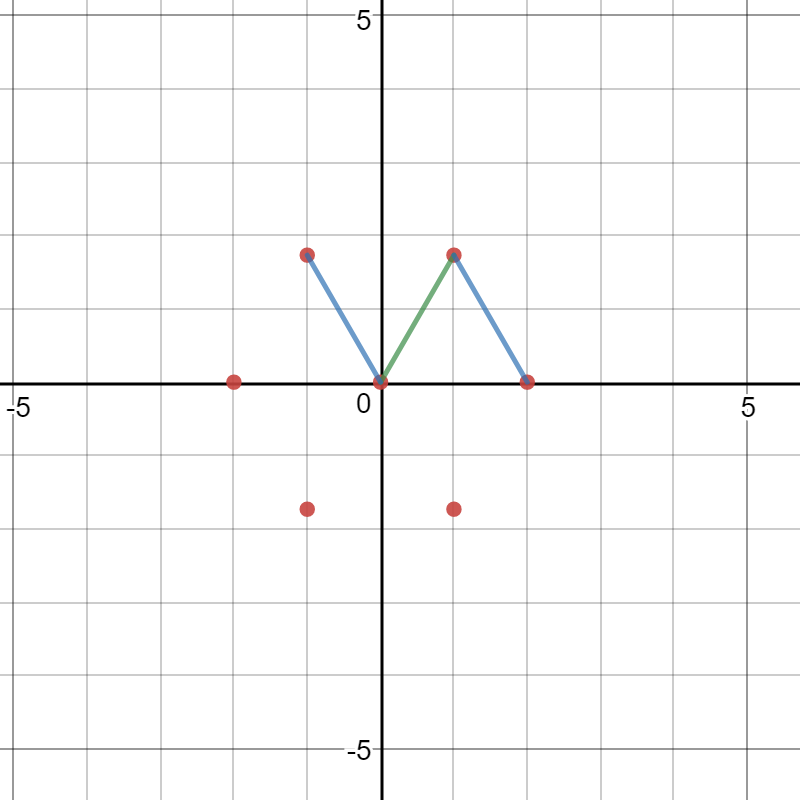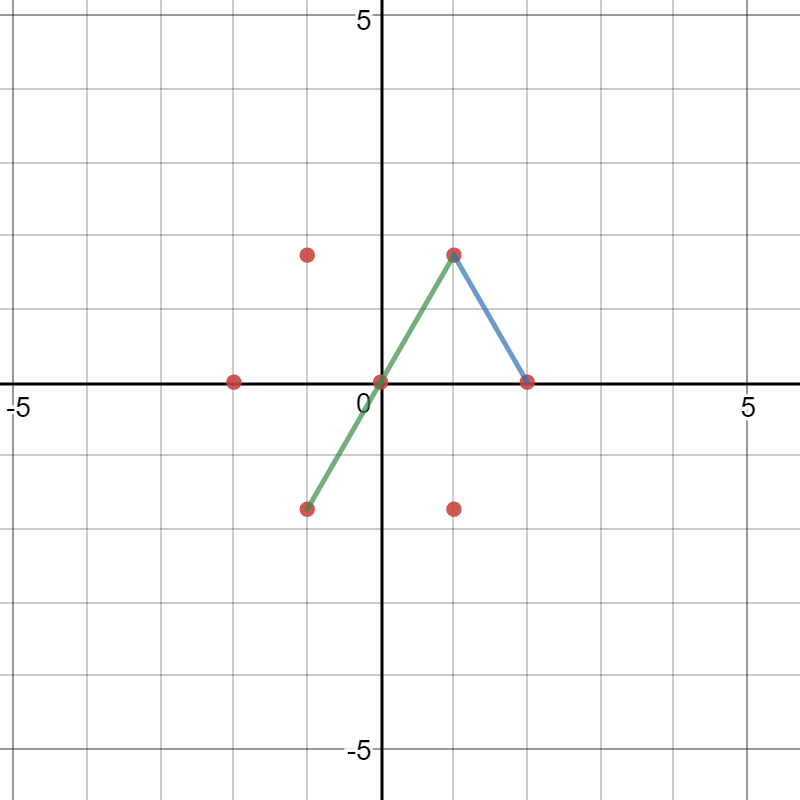How to express these vectors in terms of p and q?
ABCDEF is a regular hexagon with centre O. Suppose #vec(AB) = vecp# and #vec(AF) = vecq# , express #vec(AO)# , #vec(AC)# , #vec(AE)# , #vec(CE)# in terms of #vecp# and #vecq# .
ABCDEF is a regular hexagon with centre O. Suppose
1 Answer
Begin by making a drawing of the 7 points and the two vectors.
Explanation:
The following drawing show points a
 www.desmos.com/calculator
www.desmos.com/calculator
Please observe that vectors
 www.desmos.com/calculator
www.desmos.com/calculator
This is how you add two vectors, therefore, the equation for
If we make another copy of
 www.desmos.com/calculator
www.desmos.com/calculator
This means that:
Substitute
We shall remove the extra copy of
 www.desmos.com/calculator
www.desmos.com/calculator
This means that:
Substitute
We do not need a drawing for
Solve for
Substitute
Substitute
